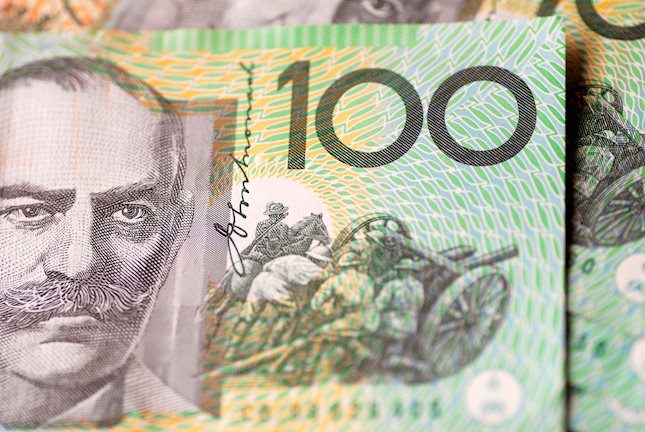- Claims forecast to slip to 1.375 million from 1.427 million.
- Four week moving average has not be below 1 million since March 20.
- Continuing claims expected to be at 18.95 million, down 24% from peak.
- Dollar modestly lower on good US economic data, ebbing virus fears despite the rise in cases.
The unexpected recovery in May and June payrolls has not dented the new unemployment claims flowing into the Labor Department where the four-week average has yes to drop below 1.5 million.
Initial claims are predicted to fall to 1.375 million in the week of July 3 from 1.427 million prior. Continuing claims re projected to drop to 18.95 million from 19.29 million. The four-week moving average for initial claim was 1.503 million in the June 26 week.
Initial jobless claims, 4-week moving average
FXStreet
Payroll statistics
Job creation and rehiring has been productive in the last two months with many more people returning to work than had been anticipated. The NFP consensus forecast figure for May was for a loss of 8 million jobs and the June number for a gain of 3 million for a total loss for 5 million jobs over the two months.
The actual figures for May and June were 7.499 million new jobs a swing of 12.499 million, certainly the largest beat in the history of economic forecasts.
Non-farm payrolls rose 4.8 million in June and the May original total of 2.509 million was revised higher by 190,000 to 2.699 million.
The June unemployment rate fell to 11.1% from 13.3% in May, 12.3% had been predicted. Average hourly earnings dropped 1.2% on the month as lower-paid workers were rehired and rose 5% on the year. The labor force participation rate climbed to 61.5% from 60.8% in May. The underemployment rate dropped to 18% from 21.2%.
Consumer confidence
The improving jobs picture has helped to boost consumer attitudes.
The Michigan Survey of Consumer Sentiment has rebounded from its April low. The two month drop from February to April in each of the three indexes, sentiment, current conditions and expectations was the steepest in the 68 year series.
The current conditions index recovered the most--April 74.3 to June 87.1, followed by overall sentiment--April 71.8 to June 78.1--and then expectations--April 70.1 to June 72.3.
Conference Board figures showed a sharper recovery. The consumer confidence index jumped to 98.1 in June from 85.9 in May, easily passing the 91.6 forecast. The present situation index climbed to 86.2 from 68.4 and the expectations index rose to 106.0 from 97.6.
Retail sales and consumption
The gain in consumer attitudes is enabling consumption. Retail sales, durable goods and personal spending numbers for May confirmed the reversal of April’s near paralysis in consumption.
Retail sales plunged 14.7% in April, the largest one month drop on record and then soared 17.7% in May, more than double its 8% forecast. The June retail numbers will be reported by the Census Bureau on July 16.
Retail sales
Durable goods, a set of sales for long-lasting items, fell 18.1% in April and rebounded 15.8% in May, beating the 10.9% prediction. Non-defense capital goods, the business investment proxy, dropped 6.5% in April, then rose 2.5% in May, much more than the 1% estimate.
Personal spending climbed 8.2% in May following the 12.6% April tumble and was the only consumption gauge to miss its forecast at 9%.
Conclusion and the dollar
The disparity between the payroll and claims numbers suggest that that the US economy is moving in two directions at one.
Millions of workers are being rehired at a much faster pace than anticipated as most of the economy liberalizes pandemic restrictions. At the same time businesses continue to fail from the prolonged closures. In many urban areas, especially on the coasts, the commercial traffic needed to sustain restaurants, bars and small shops, remains far below normal levels.
This development indicates that the recovery, however fast, will not easily provide jobs for the unknown number of workers whose employers are permanently closed.
The dollar is also being pulled in two directions. On one side the improving economic data in the US has greatly subdued the pandemic risk-premium. At the same time the rising tide of coronavirus cases, even if not accompanied by increasing fatalities, has stoked fears of the long-bruited second wave of the pandemic.
For the past three weeks the major pairs have been trapped in tight ranges as the contest works itself out. The USD/JPY has moved between 106.50 and 108.00 since June 10. The EUR/USD has traded from 1.1200 to 1.1350, the sterling from 1.2350 to 1.2600 and the AUD/USD between 0.6800 and 0.7000.
Unless most of the US resumes lockdowns of the scale and duration of March and April the current flirtation with the risk dollar will eventually disappear.
Information on these pages contains forward-looking statements that involve risks and uncertainties. Markets and instruments profiled on this page are for informational purposes only and should not in any way come across as a recommendation to buy or sell in these assets. You should do your own thorough research before making any investment decisions. FXStreet does not in any way guarantee that this information is free from mistakes, errors, or material misstatements. It also does not guarantee that this information is of a timely nature. Investing in Open Markets involves a great deal of risk, including the loss of all or a portion of your investment, as well as emotional distress. All risks, losses and costs associated with investing, including total loss of principal, are your responsibility. The views and opinions expressed in this article are those of the authors and do not necessarily reflect the official policy or position of FXStreet nor its advertisers. The author will not be held responsible for information that is found at the end of links posted on this page.
If not otherwise explicitly mentioned in the body of the article, at the time of writing, the author has no position in any stock mentioned in this article and no business relationship with any company mentioned. The author has not received compensation for writing this article, other than from FXStreet.
FXStreet and the author do not provide personalized recommendations. The author makes no representations as to the accuracy, completeness, or suitability of this information. FXStreet and the author will not be liable for any errors, omissions or any losses, injuries or damages arising from this information and its display or use. Errors and omissions excepted.
The author and FXStreet are not registered investment advisors and nothing in this article is intended to be investment advice.
Recommended Content
Editors’ Picks

AUD/USD keeps the red near 0.6200 after Chinese inflation data
AUD/USD keeps losses near the 0.6200 mark following mixed Australian data and as expected China's inflation numbers. The RBA's dovish shift and China's economic woes add to the weight on the Aussie as risk sentiment remains tepid. Fedspeak eyed.

USD/JPY: Bears attack 158.00 on strong Japanese wage growth data
USD/JPY drifts lower to test 158.00 early Thursday after data showed that base salaries for Japanese workers increased at the fastest pace in 32 years. The data backs the case for the BoJ to raise interest rates, which, along with the cautious market mood, benefits the safe-haven Yen and drags the pair away from a multi-month top.

Gold price retreats toward $2,650 despite risk aversion
Gold price is retreating from near a monthly high of $2,670 in Thursday's Asian trading. Resurgent haven demand for the US Dollar amid risk aversion weigh on Gold price even as US Treausry bond yields extend pullback. Focus shifts to Fedspeak amid holiday-thinned trading.

Has Bitcoin topped for the cycle? Here's what key metrics suggest
Bitcoin experienced a 2% decline on Wednesday as the cryptocurrency market grapples with recent losses. On-chain data has indicated a shift in the accumulation of the leading cryptocurrency, suggesting that holders are increasingly selling their assets.

Bitcoin edges below $96,000, wiping over leveraged traders
Bitcoin's price continues to edge lower, trading below the $96,000 level on Wednesday after declining more than 5% the previous day. The recent price decline has triggered a wave of liquidations across the crypto market, resulting in $694.11 million in total liquidations in the last 24 hours.

Best Forex Brokers with Low Spreads
VERIFIED Low spreads are crucial for reducing trading costs. Explore top Forex brokers offering competitive spreads and high leverage. Compare options for EUR/USD, GBP/USD, USD/JPY, and Gold.